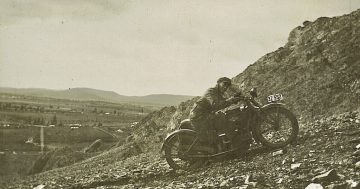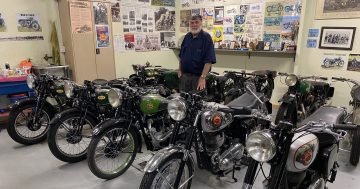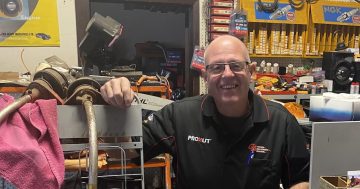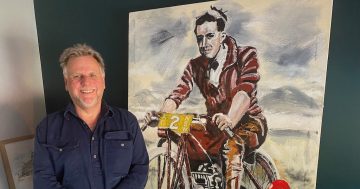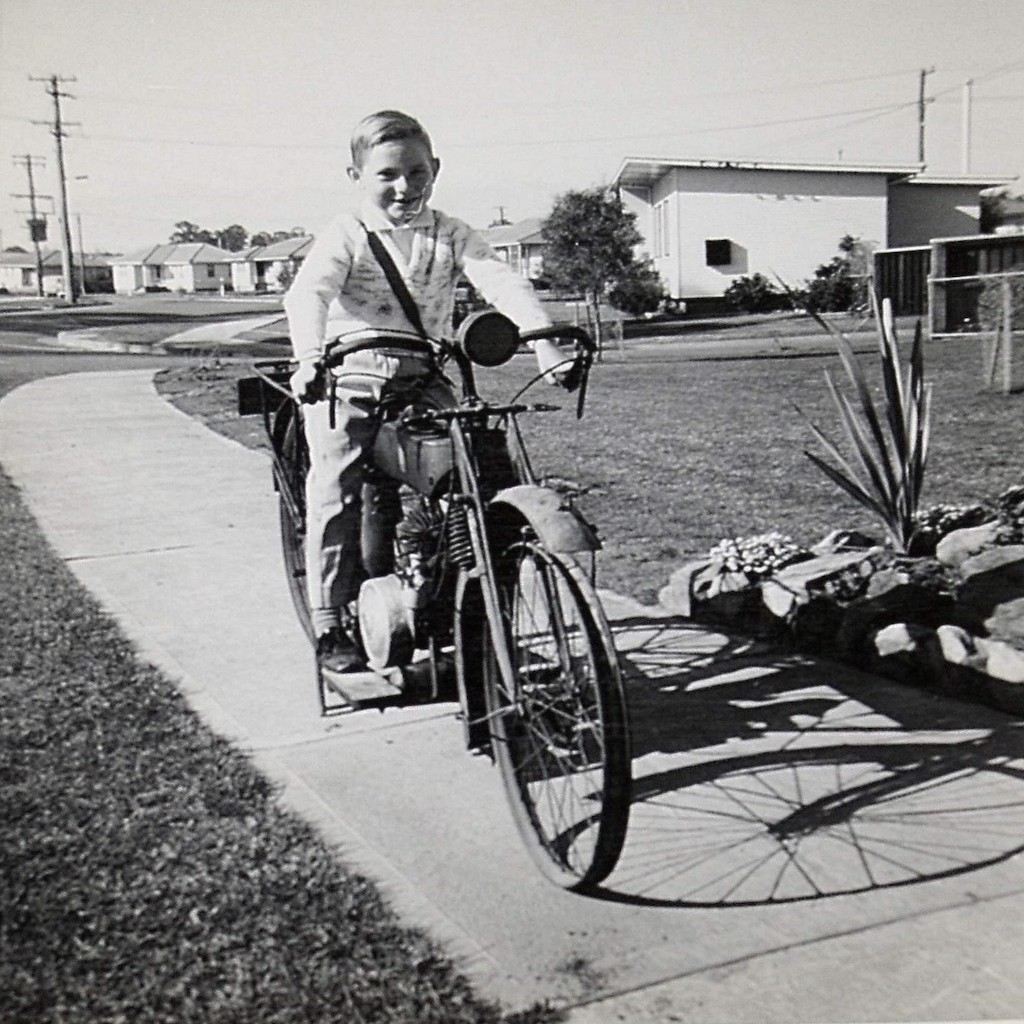
Peter Seymour on his dad Merv’s Waratah motorcycle about 1969. Its tyres and other parts were missing. They cleaned it up, stripped it down and stowed it in boxes for better times ahead. Photo: Seymour family collection.
A 1924 Waratah motorcycle with a chequered history will line up for the 100th anniversary of the first Australian Grand Prix in Goulburn next month.
On the rare occasions Peter Seymour rides the Waratah, it’s like a victory lap tribute to his father Merv who pursued, persevered and restored the machine.
Merv had an exceptional ear for an engine. A mechanic and diagnostics engineer, he could ride in your car for a while and diagnose that a right-hand side wheel bearing was out, or the tappet on the third cylinder in the engine was suspect.
He worked as a diesel mechanic on a merchant marine ship, then reconditioned engines and was a part-owner of Gem Engines in Sydney, before shifting into sales related to the automotive industry.
He offered to buy the 1924 Waratah motorcycle from his stepfather, who agreed to sell in return for Merv working for him over a period of time.
Merv completed the work, but his stepfather sold the bike from under him to someone else in Sydney. It was not until 1969 that he found the Waratah and bought it off the man who had purchased it from his stepfather. He stripped down the rusting and damaged machine, cleaned all the parts and stowed them in boxes until he retired in 2000 in Cowra.
Now semi-retired and living in Goulburn, Peter helped his father and mother June settle into Cowra. Then Peter’s wife Sue decided to challenge Merv one day: “I want to see that bike in the Henry Lawson Festival parade in Grenfell.”
Bits and pieces were missing from the old bike. Fins had broken off the cylinder head and the crankshaft was cracked. Fortunately Merv had kept records of spring makers, and nuts and bolts suppliers. Villiers in England had a stock of older engines. He sourced 20-inch tyres to stretch over the 21-inch rims from a Taree man who imported rickshaw tyres.
Joining the hunt for parts, Peter posted requests on social media and wrote to world champion motorcycle racer Wayne Gardner who owned a Waratah bike. (Gardner had not taken his bike out of storage).
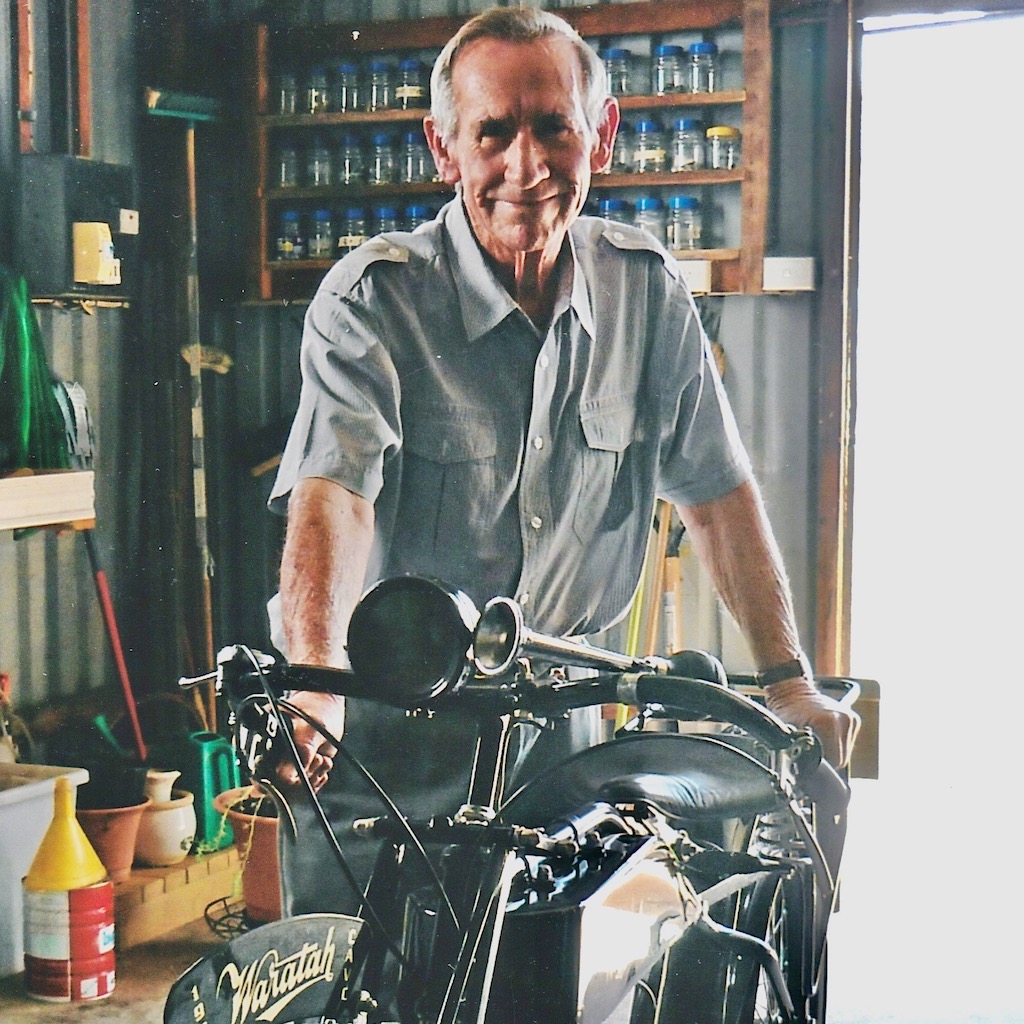
Merv Seymour in retirement with a satisfied grin, near the Waratah he lovingly restored with the help of his son Peter. Photo: Seymour family collection.
Merv toiled away, did all the panel beating himself, used professionals to do the painting and sign work, and after several years the Waratah was ridable. Peter rode it in the Henry Lawson Festival and a parade in Cowra. “It was starting to get well known,” Peter said. “It was his pride and joy, you could not get him away from it.”
Merv died 16 years after moving to Cowra, and June died not long after relocating to Goulburn. Peter bought the bike from their estate.
“This bike was an everyman’s bike, like a commuter bike, and for enjoyment and recreation,” he said. “Then all of a sudden they realised that replacing the horse, these things could get a man to and from work on the smell of an oily rag,” he said.
The Waratah is one of the earliest models with a clutch and protruding gear stick to change the two gears smoothly. The brake is a pad pressed against the back tyre which is more than some other bikes had in the original grand prix 100 years ago. They raced with no brakes.
The 147cc bike has no speedometer, no gauges whatsoever. The only electrics on it are a magneto that throws enough power for the engine and a one-candle power headlight.
What it does have are warm memories of Merv, a thoughtful father of four who was happy to spend time with his children.
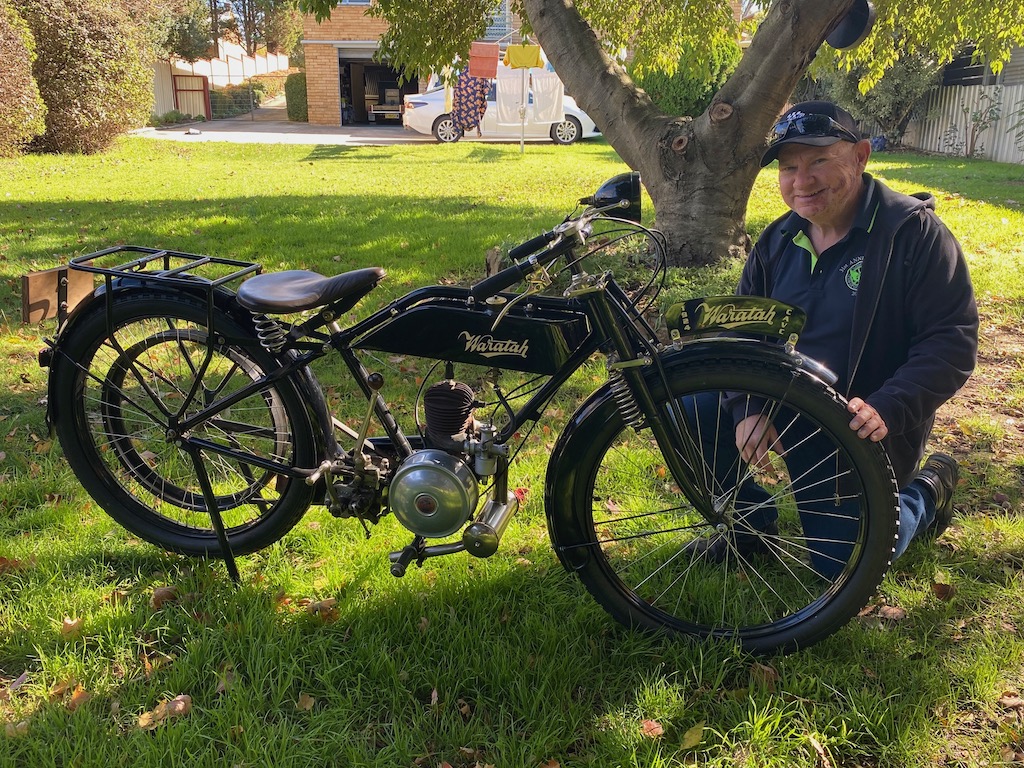
Peter Seymour with the 1924 Waratah. He concedes he will never have the two-stroke machine running as well as his father and mechanic Merv did. The accelerator is a lever attached to the handlebar, and a gear stick handle reaches to waist height. Photo: John Thistleton.
“He was always with us; if a parent needed to drive somewhere, erect tents, he was always there,” Peter said. “That impression that he left on me, that I then had with my son James was that if you are there, if you are involved they are the happy times.”
He will ride the Waratah from 6 pm on Friday evening, 21 June in the first event of the 100th anniversary weekend, a night cruise around central Goulburn. It’ll probably be freezing cold. The one-candle light will be barely visible, and yet pride in this black-and-gold 100-year-old machine will blaze brilliantly.
Original Article published by John Thistleton on About Regional.












